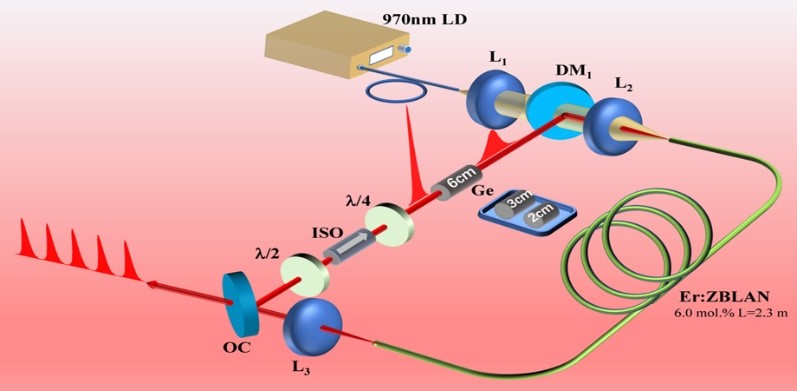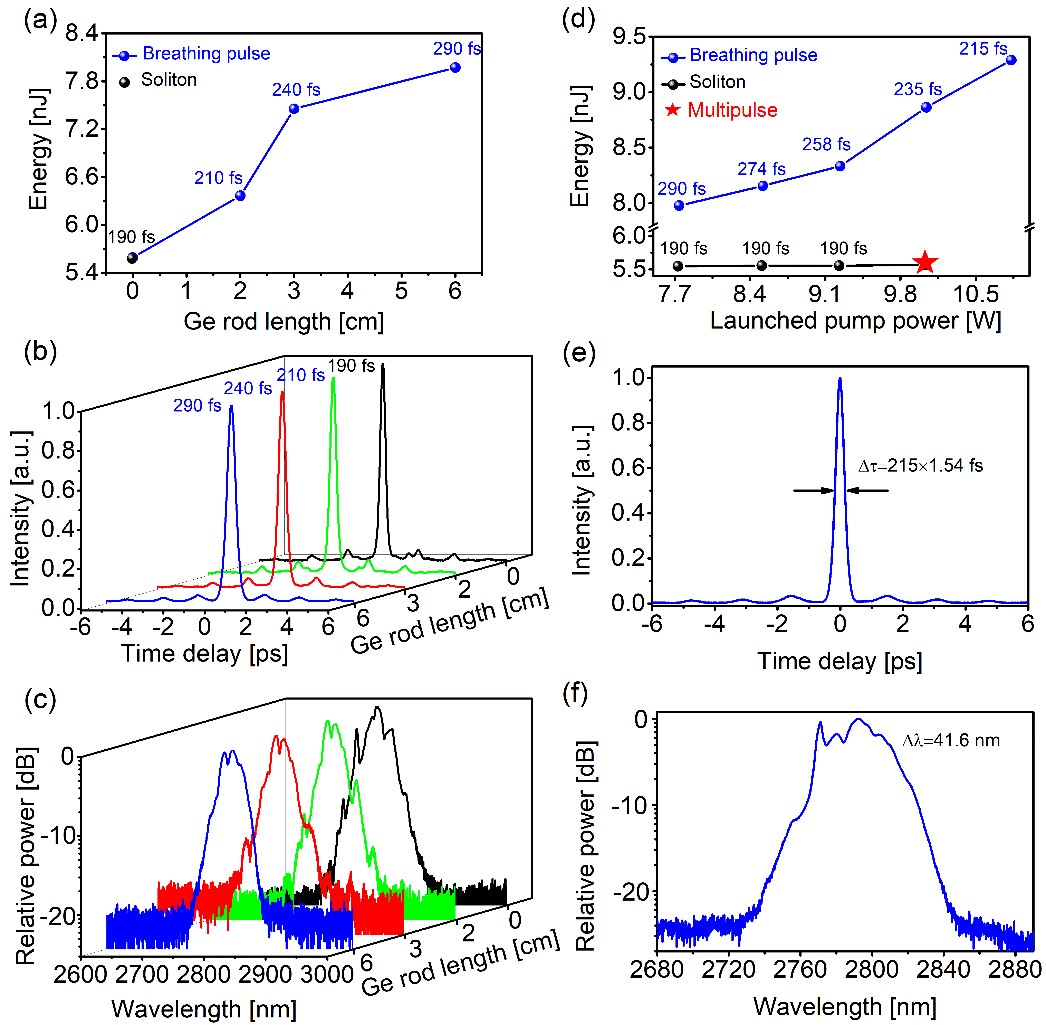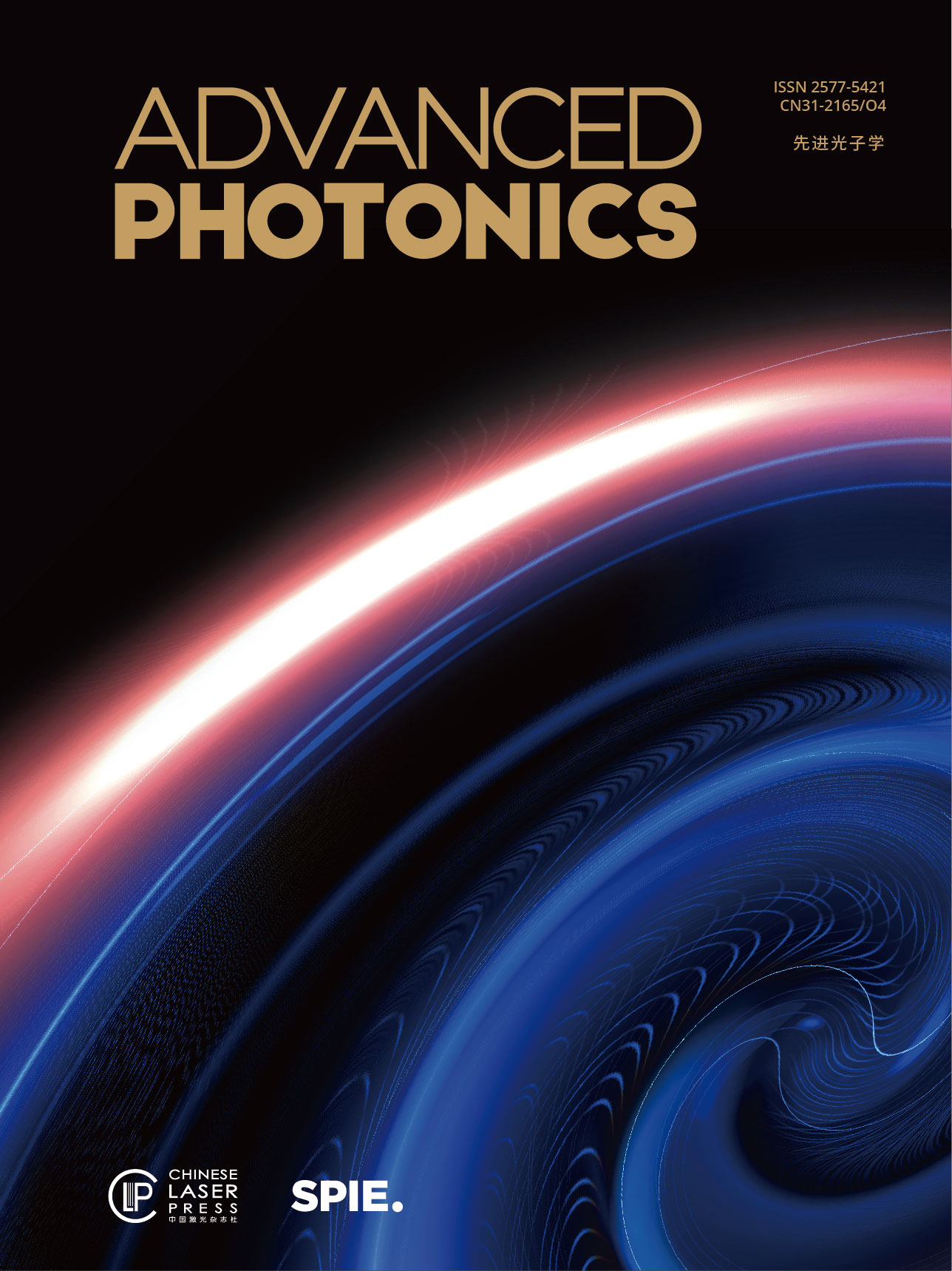In the past, generation of MHz mid-infrared femtosecond pulses relied on synchronously-pumped optical parametric oscillator (OPO), which needed a strong femtosecond pumping source and a rigid repetition-matching OPO cavity. Mode-locked fluoride fiber laser provides a direct and efficient way to produce mid-infrared femtosecond pulses, which facilitates a wide range of applications such as mid-infrared supercontinuum generation, material modification, medical imaging, and mid-infrared ultrafast spectroscopy. However, due to lack of dispersion-compensation technique in the mid-infrared, mode-locked fluoride fiber lasers are confined to soliton mode-locking regime, which fundamentally limits the scaling of pulse energy and peak power.
Intracavity dispersion management is an effective way to overcome the limitation of pulse energy and peak power. In the past, dispersion-managed fiber lasers have been widely employed in the near-infrared and proved successful in controlling the pulse evolution forms such as stretched pulse, dissipative soliton, and similariton, significantly improving the performance of the femtosecond fiber laser. The sign and amount of group velocity dispersion (GVD) can be conveniently engineered by ion doping or by structures designing in the conventional silica fiber system. However, fluoride glass-based dispersion-compensation fiber is unavailable at present, which blocks the development of mid-infrared mode-locked fluoride fiber lasers.

Schematic of the breathing-pulse mode-locked Er:ZBLAN fiber laser. Original article: Zhipeng Qin et al., "Mode-locked 2.8 μm fluoride fiber laser: from soliton to breathing pulse"

Characteristics of the breathing-pulse mode-locked fluoride fiber laser. Evolution of (a) pulse energy, duration, (b) autocorrelation trace, and (c) mode-locking spectrum with the inserted Ge rod length. The net intracavity dispersions are -0.191, -0.158, -0.141, -0.090 ps2 for Ge rod lengths of 0, 2, 3, and 6 cm, respectively. Evolution of the (d) pulse energy and duration with the launched pump power in the soliton and breathing-pulse regimes. (e) Measured autocorrelation trace and (f) mode-locking spectrum for 9.3-nJ output pulses.;
Researchers from Shanghai Jiao Tong University recently reported a versatile and practical dispersion-compensation approach for mode-locked fluoride fiber lasers using an infrared-bandgap semiconductor. Related research results were published in Advanced Photonics, Vol. 1, Issue 6, 2019 (Zhipeng Qin, Guoqiang Xie, Hongan Gu, Ting Hai, Peng Yuan, Jingui Ma, Liejia Qian. Mode-locked 2.8-μm fluoride fiber laser: from soliton to breathing pulse[J]. Advanced Photonics, 2019, 1(6): 065001).
They found that semiconductor material possesses a huge GVD near the absorption edge resulting from the rapid change of refractive index. For example, germanium has a huge normal GVD at 2.8 μm which is 20 times larger than that of fluoride fiber. Thus, Ge rod with centimeters scale in length is sufficient to manage the intracavity dispersion of mode-locked fluoride fiber laser.
Benefitting from the intracavity dispersion management, mid-infrared mode-locked fluoride fiber lasers are no longer confined to soliton mode-locking regime. A new form of dispersion-managed soliton, breathing pulse was demonstrated in a mode-locked fluoride fiber laser at 2.8 μm using nonlinear polarization rotation technique. A record peak power (43 KW) was produced from the dispersion-managed femtosecond fluoride fiber laser, which has reached the level of state-of-the-art mid-infrared femtosecond OPOs around 2.8 μm.
This work provides a versatile and practical scheme of mid-infrared dispersion management and opens the door for realizing new operation regimes in mode-locked fluoride fiber lasers, creating a great potential for further scaling of pulse energy and peak power of mid-infrared femtosecond fluoride fiber lasers.


